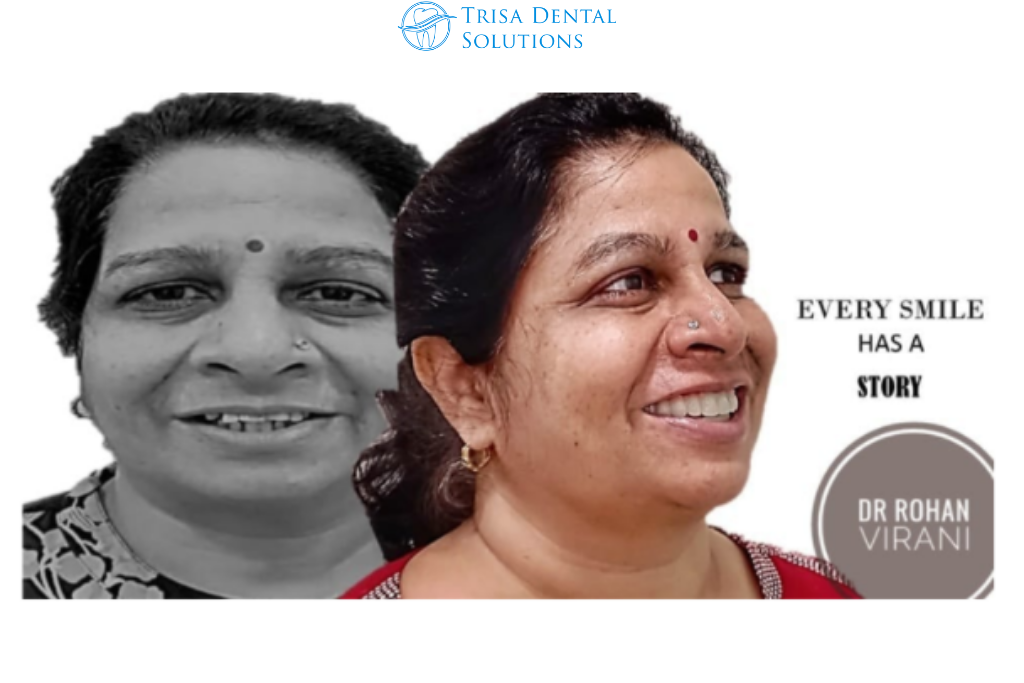
Full Mouth Rehabilitation With Temporization In Basal Implants
- Dr Rohan Virani on 10/6/2021
A 50-year-old lady with Type 2 diabetes had consulted us because of her dental problems. She explained that how it had become difficult for her lately to chew and eat anything. Apart from this she also informed the doctors of having an unaesthetic smile.
The patient wanted the treatment for her problems to be done in minimum time and also the treatment process should be least traumatic and as painless as it can be. Not only this but also the treatment should be a fixed long-term solution.
After discussing all this with the patient, the expert dentists at the clinic suggested rehabilitating her mouth with basal implants which are supported by a fixed prosthesis, this process will not require any cuts or bone grafting which usually leads to pain and traumatic experiences.
What Are Basal Implants?
Basal Implants refer to the implants utilizing principles of utilizing basal bone areas which are free of infection and resorption. The Basal Implants are a new broad indication and have almost no limitations.
It could also be categorized as an "Oral Division of Orthopedic surgery as per the Basal Implant centre in Mumbai at Mumbai Dental Solutions". We were one of the first providers of the Immediate Basal Implant system in Mumbai, India.
Here are a few advantages & benefits of Basal implants:
-
Flapless implants, which means the treatment will involve no cuts, and bleeding will be minimal.
-
No bone grafting is required.
-
Faster recovery.
-
Basal implants are also called immediate loading implants because they are loaded in 72 hours.
This is the Preoperative intraoral view below:
This is the preoperative radiographic view. It shows that the patient has only 18 teeth present and the teeth were periodontally compromised due to the absence of the molars.
After careful examination, 18 smooth surface implants - Basal implants - were placed immediately. The procedure was flapless and least painful.
Selective welding for the posterior implants is used to stabilize dental implants in Augmented Sites.
Radiographs are useful for general evaluation, including assessment of the presence or absence of dental or bony pathology, the presence and extent of edentulous areas and their potential to support implants, or other anatomical limitations.
Here is the immediate postoperative radiographic view.
Anterior Deprogrammer is used to find Centric Relation.
The anterior deprogrammer is a flat plane occlusal splint with an anterior acrylic block designed to disclude the posterior teeth.
In dentistry, centric relation is the mandibular jaw position in which the head of the condyle is situated as far posterior and superior as it possibly can within the mandibular fossa/glenoid fossa.
After this, temporary prostheses are left for 2 months so the soft tissues can heal.
Postoperative radiographic view, after 2 months
This image indicates complete bone healing around smooth surface implants/ basal implants.
After careful examination and giving attention to details, Maxillary and Mandibular impressions are made. These impressions are made by using additional silicone impression material for the final prosthesis.
Maxillary and Mandibular prostheses are placed intraorally after careful examination and provide bilateral balanced occlusion.
After the hassle-free treatment, the patient got her beautiful smile back. Read more about the feedback from our patients at Mumbai Dental Solutions.
 Dial Local Number in your Country
Dial Local Number in your Country
 86898 97525
86898 97525 +1 413 464 4807
+1 413 464 4807 +1 519 933 8489
+1 519 933 8489  +43 664 8569993
+43 664 8569993 